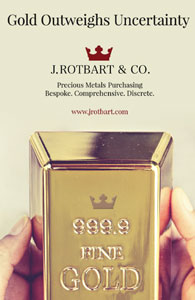Warning: Parameter 1 to plgContentLoginToRead::onAfterDisplayTitle() expected to be a reference, value given in /home/joomla789/domains/jewishtimesasia.org/public_html/libraries/joomla/event/event.php on line 67
| Rebuilding the past- the conservation of Ohel Leah |

|

|
|
The Ohel Leah Synagogue of Hong Kong (OLS), has a voice of its own, separate from that of its contemporary worshipers.
 It has seen more than its share of wars, upheavals, colonialism and social change. While the landscape surrounding the synagogue has been almost completely transformed, the synagogue with the aid of a massive conservation and reconstruction plan has stood the test of time. Construction of the synagogue began with the laying of the foundation stones on 7 May 1901 in a project initiated by the Sassoon brothers, Jacob, Edward and Myer. The initial structure, though completed in early 1902, little resembles OLS of today. Early improvements were made sometime between August 1904 and before 1907.
From an examination of surviving records and photographs, historians estimate that the improvements were made in 1905, in conjunction with the erection of the Jewish Recreation Club. It was then that the majestic neo-baroque turrets were added along with a formal arcaded portico with a balustraded balcony. The finished structure, architecturally speaking, incorporates classically derived elements arranged in a typically Edwardian free classical style, very much characteristic of the time. Architects Leigh and Orange designed the exterior, utilising red brick and white classical detailing and dressing. The exterior of OLS is strikingly similar to the design of some of their other surviving projects including St. Andrews Church (1904) in Kowloon and the former Pathological Institute (1906) on Caine Road. The interior of the synagogue was based on a simple rectangular basilica plan and with design elements reminiscent of Sephardi synagogues of the time, not surprising given the heritage of its founders. The interior, a relativelyopen floor plan, was fixed with polished Aberdeen granite columns, a central bimah enclosed by carved wood balustrades on three sides, and heavy, rich wood benches.
The synagogue site was expanded in 1937 to accommodate additional facilities for the rapidly expanding community. Historical data also suggests that the original timber roof was also replaced at this time due to termite damage. The magnificence of the synagogue, the adjacent Jewish club and other additional buildings had reached its pinnacle. Hong Kong, along with the rest of the world, was about to be shaken and ravaged by World War II. From 1942-1945, the Jews of Hong Kong as well as others classified as allied sympathisers were interned. The synagogue’s torah scrolls and cases were carefully hidden. There are reports that the Japanese perhaps used the building as a stable or a warehouse for munitions storage. While the synagogue remained intact, the Jewish Recreation Club was completely destroyed. The overall vibrancy of the community declined after the war and the upkeep of the buildings was often frustrated by lack of funds. In 1960 repairs were made to the roof and in 1978 a fund drive by the Jewish Women’s Association of Hong Kong saw to the installation of a fi re escape and superfi cial improvements to the women’s gallery. At some stage, electric fans and new lighting were installed but in a process that lacked exactitude with respect to conservation principles. Air conditioning was installed in the early 1990s. In 1976 the Antiquities and Monuments Ordinance was passed in Hong Kong and the Ohel Leah Synagogue was listed as a Historical Building (Grade 1) on 4 July 1987 but by December of that same year, the listing was voluntarily removed as there was talk of demolishing the entire building. In 1990, the trustees of Ohel Leah entered into a property development agreement with Swire Properties Ltd. that gave the developers a 99 lease on a portion of the property for use for the construction of a massive residential complex. The agreement included the designation of space for the Jewish community to use for a synagogue and community centre. There was still discussion of demolishing the original synagogue and building a new facility. What followed next was a very emotional response from a group of members of the Hong Kong Jewish community determined to save the synagogue from demolition and determined to preserve this vital part of the community’s history and heritage. Ultimately, the Ohel Leah Synagogue prevailed. She was to be saved in a painstakingly detailed and extensive project that began with a year of careful planning and surveys in 1996.
The synagogue had a number of structural defi ciencies that need to be addressed, including non-compliance with current fi re safety provisions and ad-hoc substandard engineering services. Other defi ciencies were aesthetic, though not minor, and there were a number of use related problems with poor lighting, acoustics and climate control. A Site Survey team was implemented and after careful consideration and evaluation a team was chosen to undertake this massive conservation project to be led by Bruce Pettman, Principal Conservation Architect along with a team from the Heritage Unit of SACON International and the Hong Kong office of Hassell Architects. A Statement of Cultural Significance was incorporated into the reconstruction brief to serve as a guide for the decisions that were to be made and a Dilapidation Survey was conducted. The actual works programme was set to commence in November 1997. The first stage involved the preparation of the building and site. Traditional bamboo scaffolding was utilised, portions of the building were wrapped and the hard pavement around the building was broken and removed. Stabilisation of the slopes to the north of the synagogue was required as was excavation of the forecourt in order to allow for the installation of new services. After careful chipping of the entire exterior, the original red brick was exposed. A damp proof course was installed to prevent moisture seepage. As the plasterwork had deteriorated signifi cantly, repairing this was involved and time consuming and required point paint removal and the careful conservation and stabilisation of the original render of the wall mouldings and details around windows and doors. An acrylic lime render was used on the exterior. The decision was made to retain the barrel vaulted-roof rather than expose the initial roof, however this still necessitated removal of the terracotta tiles on the main roof and the arc roof in order to install a waterproof membrane system. Site drainage was improved and the reality of continued water penetration, due to the climate of Hong Kong, required extra measures of protection. With the major conservation work resolved, the aesthetics were then carefully reviewed. A new exterior paint colour was chosen to refl ect the period of the original building. The colour scheme of the interior also required a careful balance of design elements, personal taste and a scheme that was also reflective of the historical period in which the details and furnishings were fitted. A substantial upgrade to the initial lighting was required. New bronzed metal chandeliers were designed and additional discreet lighting was added. The metal fixings including the bronze menorah and wrought metal rail for the arc dais were designed adhering to the principles of the brief. New air conditioning was added to both the upstairs and downstairs, in the void created by new tiered seating, in a manner that was entirely unobtrusive. The original furniture was able to be carefully restored and missing details were recarved and original timber finishes reapplied. Simple leather cushions were added to the teak pews. In the women’s balcony, entirely new seating was installed. Around the synagogue, surrounding surfaces were paved in a way that was contemporary, functionally yet complementary to the conservation plan of the site. An extensive landscaping project completed the Kadoorie memorial garden and surrounding area. The reconstructed, restored Ohel Leah Synagogue received the Hong Kong Institute of Architects Conservation Award in 1998 and an Outstanding Project Award in the inaugural UNESCO Asia-Pacific Heritage 2000 Awards. As summarised by the UNESCO Selection Panel, “The restoration of this building demonstrates how heritage conservation not only preserves the cultural life of a community, but can also inspire a renewed sense of pride among its members…the historic Ohel Leah Synagogue will continue to serve the community well into the future.†While it is impossible to fully explore the details of this project within the framework of an article because of the scope of the project and the history it unearthed, the information for this article and photographs were taken from a comprehensive book on the subject, The Ohel Leah Synagogue Hong Kong- Its history and conservation, published by The Jewish Historical Society. This JHS title is available, for sale, through the Hong Kong Jewish Community Centre. (Issue March 2009)
|




















